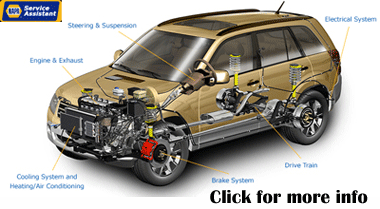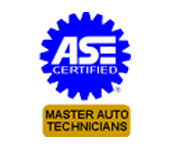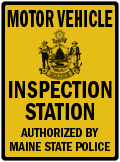General Maintenance For Your Vehicle
The traditional core of the automotive industry, known as the "tune-up," has undergone significant changes over time. Despite some misconceptions, contemporary vehicles still require tune-ups for optimal performance.
With the rapid advancement of technology, the processes involved in carrying out a conventional tune-up have undergone a substantial transformation. Advanced ignition and fuel systems have become standard, incorporating one or more onboard computers to regulate essential engine and transmission functions.
Failure to maintain the vehicle appropriately will hinder your ability to reach your desired destination. In the 21st Century Tune-up for modern vehicles, it is essential to inspect the following systems: battery, charging and starting engine, mechanical powertrain control (including onboard diagnostic checks), fuel ignition, and emissions.
To ensure optimal performance, fuel efficiency, and reduced emissions, the Car Care Council advises motorists to invest time in understanding their vehicles. Familiarize yourself thoroughly with the operation of all systems by studying the owner's manual. Pay close attention to indicator lights and instruments.
Getting Your Vehicle Ready for Winter
Some of the following tips can be performed by any do-it-yourselfer; others require the skilled hands of a professional auto technician.
Heater/Defroster
The heater and defroster must be in good working condition for passenger comfort and driver visibility. Newer models have a cabin air filter that should be replaced periodically. Check your owner's manual for the location and replacement interval.
Battery
The only accurate way to detect a weak battery is with professional equipment. Routine care: Scrape away corrosion from posts and cable connections; clean all surfaces; re-tighten all connections. If battery caps are removable, check fluid level monthly. Avoid contact with corrosive deposits and battery acid. Wear eye protection and rubber gloves.
Tires
Worn tires will be of little use in winter weather. Examine tires for remaining tread life, uneven wearing, and cupping; check the sidewalls for cuts and nicks. Check tire pressures once a month. Check the tires when they are cold, before driving for any distance. Rotate as recommended. Don't forget your spare, and be sure the jack is in good condition.
Getting Your Vehicle Ready For Summer
Summer's heat, dust, and stop-and-go traffic, will take their toll on your vehicle. Add the effects of last winter, and you could be poised for a breakdown. You can lessen the odds of mechanical failure through periodic maintenance. Your vehicle should last longer and command a higher resale price, too! Some of the following tips are easy to do; others require a skilled auto technician.
Air Conditioning
A marginally operating system will fail in hot weather. Have the system examined by a qualified technician. Newer models have cabin air filters that clean the air entering the heating and air conditioning system. Check your owner's manual for location and replacement interval.
Cooling System
The greatest cause of summer breakdowns is overheating. The cooling system should be completely flushed and refilled about every 24 months. The level, condition, and concentration of the coolant should be checked periodically. (A 50/50 mix of anti-freeze and water is usually recommended.) DIYers, never remove the radiator cap until the engine has thoroughly cooled! The tightness and condition of drive belts, clamps, and hoses should be checked by a pro.
Brakes
Brakes should be inspected as recommended in your manual, or sooner if you notice pulsations, grabbing, noises, or longer stopping distance. Minor brake problems should be corrected promptly.
Discover More About General Maintenance Tips At Village Center Auto Care in Scarborough
Ask The Mechanic








